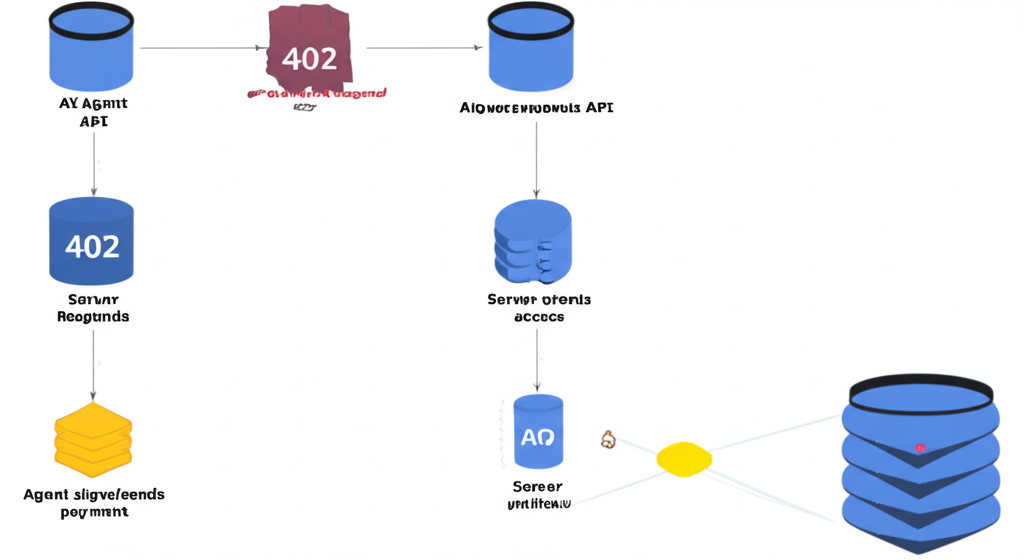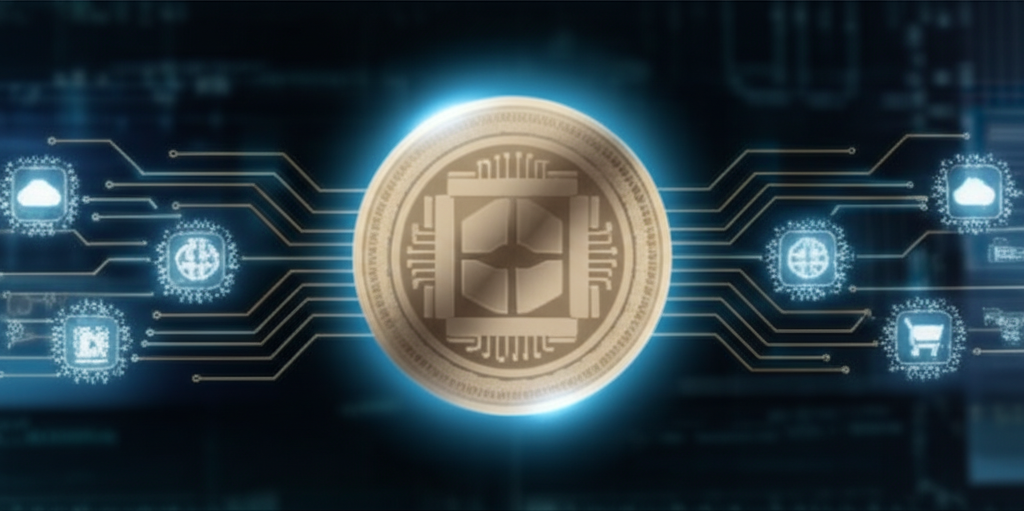Introducing our new AI-powered NFT creator
Creating NFTs has never been easier and fun!

Unlock Instant, AI-Powered Payments Today with x402!

Gregory Marcilhacy
May 7, 2025
Tired of clunky, outdated payment systems holding back your AI agents and digital services? Imagine a world where your applications can pay for data and APIs on the fly, no subscriptions, no sign-ups, just seamless, instant transactions. In this guide, you’ll learn how the groundbreaking x402 protocol is revolutionizing internet-native payments, making your digital life faster, cheaper, and way more efficient.
Table of Contents
- Decoding x402: The Future of Internet-Native Payments
- Why Old Payment Rails Are Holding You Back
- How x402 Works Its Magic: A Simple Breakdown
- Unleash New Revenue Streams: Business Models Powered by x402
- For Developers: Integrating x402 Like a Pro
- Real-World Revolution: x402 Use Cases You Can Implement Today
- Key Takeaways
- Ready to Revolutionize Your Payments?
Decoding x402: The Future of Internet-Native Payments

So, what’s all the buzz about x402? Developed by the bright minds at Coinbase, x402 is an open payment standard designed to let your AI agents and web services autonomously pay for API access, data, and digital goodies.
Think of it like this: x402 cleverly uses the long-reserved HTTP 402 "Payment Required" status code. This means no more juggling API keys, wrestling with subscription models, or manual payment headaches. We're talking real-time, machine-native transactions using stablecoins like USDC.
This isn't just a minor tweak; it's a foundational shift enabling autonomous AI systems and frictionless machine-to-machine (M2M) commerce. You get instant settlement, near-zero fees, and incredible flexibility across different blockchains.
Stat: Transactions using x402 (on Base, for example) can settle in approximately 200 milliseconds! That's faster than you can blink.
Imagine your AI needing fresh market data. Instead of hitting a paywall or needing a pre-existing account, it gets a 402 prompt, pays instantly, and gets the data. It’s like a universal vending machine for the internet, but everything is priced fairly and delivered instantly.
Here’s what makes x402 a game-changer:
- Autonomy for AI: Empowers AI agents to function without constant human hand-holding for payments.
- Frictionless Access: Eliminates the need for API keys, user accounts, or cumbersome subscriptions for pay-per-use services.
- Micropayments Made Easy: Enables tiny, per-request payments that were previously impractical.
Why Old Payment Rails Are Holding You Back

Let's be honest, traditional payment systems feel like they were designed in the stone age when it comes to the needs of today's AI and digital economy. They're slow, expensive, and riddled with complexities.
Think about ACH bank transfers taking 1-3 days to settle, or credit card payments that, despite "instant" authorization, can take days to finalize and remain vulnerable to chargebacks for months. These systems are a nightmare for high-frequency, low-value transactions that AI agents thrive on.
Legacy systems are built for human interactions, meaning they're choked with:
- High transaction fees that kill micropayments.
- Slow settlement times that create cash flow bottlenecks.
- Chargeback risks that add uncertainty.
- Manual setup and authorization processes.
This friction is a massive roadblock for AI-driven applications and M2M transactions. Your AI needs instant access, not a "please wait 3-5 business days" memo.
Here's a stark comparison:
| Payment Rail | Typical Fees | Settlement Finality | Chargeback Risk | Scalability (Theoretical Max) |
|---|---|---|---|---|
| Credit Card | $0.30 + 2.9% | Days (batch) | Yes, up to 120d | 65k TPS* |
| PayPal | ~3% + markup | Instant auth, days | Yes | Unknown |
| Stripe (Pay w/Crypto) | 1.5%+ | Depends on chain | No | Depends on chain |
| Ethereum L1 | $1–$5 + gas | 1–2 min | No | 15–20 TPS |
| x402 (on Base) | *Free (nominal gas <$0.0001)** | ~200 ms | No | Hundreds to thousands TPS |
Source: x402 Whitepaper
x402, built on modern blockchain infrastructure, blows these old methods out of the water. It’s time to upgrade your financial engine!
How x402 Works Its Magic: A Simple Breakdown

You might be thinking this sounds complex, but x402 is elegantly simple in its operation. It’s all about that HTTP 402 "Payment Required" status code.
Here’s the core payment flow:
- Client Request: Your AI agent or application requests access to an API or a digital resource.
- Payment Required (402): If no valid payment is attached, the server says, "Hold up! You need to pay." It responds with an HTTP 402 status, including pricing and payment details.
- Agent Retries with Payment: The agent (or your app) then submits a signed payment authorization as part of the retried request. This is typically a tiny amount of a stablecoin like USDC.
- Server Verifies & Delivers: The server validates the payment (super fast!), broadcasts it to the blockchain, and then—boom!—returns the response to your API request.
It’s like a digital handshake. The server says, "Pay me a tiny bit," your agent says, "Done!" and the goods are delivered. All in milliseconds.
Developers can integrate this with just one line of code for the middleware:
paymentMiddleware(amount: "0.10", address: "0x...")
This simplicity removes the dreaded friction of account sign-ups, pre-paid credits, or manual invoicing. Whether it's an AI agent fetching data or you clicking on a pay-per-view article, the experience is seamless.
Consider this:
| Scenario | Traditional Process | With x402 |
|---|---|---|
| AI Autonomous Research Assistant | Multiple account subs, manual API key setup, potential whitelisting delays. Designed for humans. | 1. Agent requests API. 2. API sends 402. 3. Agent attaches USDC & retries. 4. Instant access, immediate data. |
| Human Pay-Per-Article News Access | Account signup, payment details needed, forced subscription, manual cancellation to avoid recurring charges. | 1. User clicks article. 2. 402 shows USDC cost. 3. User confirms in wallet. 4. Article unlocked instantly. No stored cards! |
This is true pay-per-use freedom!
Unleash New Revenue Streams: Business Models Powered by x402

x402 isn't just a technical upgrade; it's a business model revolution! By enabling pragmatic micropayments, you can monetize services in ways previously unimaginable.
Legacy payment rails, with their high fees (often $0.30+ per transaction), made charging tiny amounts impractical. This forced businesses into clunky subscriptions or bundled pricing, often alienating users who only wanted a small piece of the pie.
With x402, you can now:
- Charge per API request, per data query, or even per second of usage.
- Offer true pay-per-use pricing for AI inference, on-demand content, or specialized tools.
- Enable machine-to-machine transactions, allowing IoT devices and AI agents to autonomously pay for the resources they consume.
Stat: x402 supports near-zero transaction costs, making payments as low as $0.001 (one-tenth of a cent!) per request feasible and profitable.
This opens up a universe of new monetization opportunities. Imagine:
- Seamless Per-Request Payments: No subscriptions, no prepayments, no lock-in. Your users pay only for what they use.
- Instant, Finalized Transactions: Say goodbye to chargebacks, fraud risks, and waiting for intermediaries. Revenue is yours, instantly.
- AI-Native Monetization: Let AI agents and human users pay dynamically without pre-approvals or API keys.
For you, the creator or business owner, this means potentially higher revenue, significantly lower operational costs, and a payment experience that your users will love for its simplicity. If you're creating digital assets, like with an NFT Art Generator, x402 could enable new ways to monetize access to dynamic features or exclusive content on a micro-transaction basis.
For Developers: Integrating x402 Like a Pro

Alright, tech wizards, let's talk integration! You'll be thrilled to know that x402 is designed for straightforward implementation.
The core is the x402 middleware. You configure it with the amount per request and the address where payments should land.
// Example middleware configuration
paymentMiddleware(amount: "0.10", address: "0xYOUR_WALLET_ADDRESS_HERE")
If a request hits your service without payment, your server responds with that HTTP 402 (Payment Required) status. This isn't just an error; it's a structured JSON payload telling the client exactly what's needed:
{
"maxAmountRequired": "0.10",
"resource": "/api/your-premium-data",
"description": "Access to this awesome data requires a small payment.",
"payTo": "0xYOUR_WALLET_ADDRESS_HERE",
"asset": "0xA0b86991C6218b36c1d19D4a2e9Eb0cE3606EB48", // e.g., USDC contract
"network": "base-mainnet"
}
This tells the AI agent (or human user's wallet-connected app) the cost, where to send it, what asset to use, and on which network.
Implementation Snippets
Here’s a taste of how easy it is. For a NodeJS app using Express:
// Server-Side (NodeJS/Express)
const express = require('express');
const { x402PaymentRequired } = require('@x402/express-middleware'); // Fictional package
const app = express();
app.get('/premium-content', x402PaymentRequired({
amount: "0.05", // Cost in USDC
address: "0xYOUR_WALLET",
assetAddress: "0xUSDC_CONTRACT_ON_BASE",
network: "base-mainnet"
}), (req, res) => {
// This code only runs after valid payment!
res.json({ secretData: "You paid, you get the treasure!" });
});
app.listen(3000);
Client-side, libraries will help your app or agent handle the 402 response, prompt for payment (via a connected wallet), and retry the request with payment attached.
Key things to remember for development:
- Wallet Integration: x402 works with standard crypto wallets that can sign messages (EIP-712 for clarity).
- Testing Tools: The x402 ecosystem provides local dev environments, test wallets, and mock servers.
- Chain & Token Agnostic: While USDC on Base is a prime example, x402 is designed to support various stablecoins, digital assets, and multiple blockchains. It’s future-proof!
For all the nitty-gritty details and reference implementations, head over to x402.org.
Real-World Revolution: x402 Use Cases You Can Implement Today

This isn't just theory; x402 is ready to transform how you and your AI agents interact with the digital world. The possibilities are vast!
Here are just a few ways x402 is changing the game:
- Agents Accessing APIs On-Demand:
- A research platform offers pay-per-article access, letting AI tools grab only relevant content.
- A trading AI pulls real-time stock data for $0.02 per request, paying only when critical.
- Pay-Per-Use AI Model Inference:
- A computer vision API charges $0.005 per image classification, ditching hefty enterprise fees.
- A synthetic voice AI bills $0.10 per generated audio clip, offering flexible monetization.
- Agents Paying for Cloud Compute & Storage:
- An autonomous agent buys GPU time for $0.50 per minute, only paying for compute cycles used.
- A learning AI dynamically expands its cloud storage, paying per GB as needed.
- Context Retrieval for Agents:
- A financial AI assistant pays $0.25 per premium news article for its research.
- A legal research agent accesses court documents at $0.10 each, avoiding costly database subscriptions.
- Micropayments for Human Access to Content:
- A writer charges $0.25 per article for casual readers—no full subscription needed.
- A premium research journal allows pay-per-whitepaper downloads.
- A podcast enables per-episode payments.
- A game developer can charge per play or per in-game item, offering alternatives to ads or large upfront costs.
If you're a creator, perhaps using tools like an NFT Art Generator to build unique digital collections, x402 opens doors. Imagine selling access to exclusive, dynamic NFT updates or layered content through tiny, seamless x402 payments.
Key Takeaways
You've seen how x402 is poised to fundamentally change the way payments happen online, especially for the burgeoning AI economy. It’s about speed, efficiency, and true digital autonomy.
Here’s the bottom line:
- Payments Get Autonomous: x402 empowers AI agents to pay for services without human intervention, using the HTTP 402 standard.
- Frictionless & Fast: Say goodbye to API keys, subscriptions, and slow settlements. Hello to ~200ms finality and near-zero fees.
- New Business Models: Unlock true pay-per-use and micropayment models for APIs, content, AI inference, and more.
- Developer-Friendly: Simple integration with middleware and client libraries, designed to be chain- and token-agnostic.
- Future of Commerce: x402 is paving the way for a more open, efficient, and scalable digital economy where machines and humans transact seamlessly.
Ready to Revolutionize Your Payments?
The future of internet-native, AI-driven commerce is here, and it’s powered by x402. Ready to ditch the old ways and step into a world of instant, autonomous transactions? Dive in and explore how x402 can transform your applications and revenue streams today!
Browse other posts